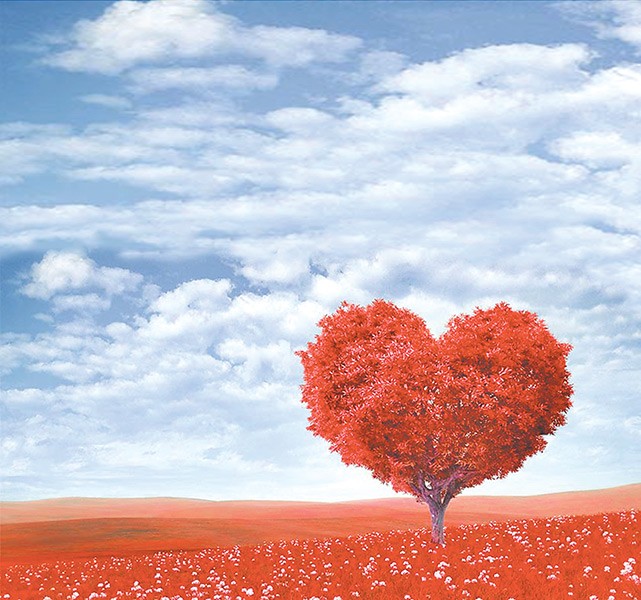Love Sociology

Your cheeks flush, your heart beats faster, and your palms get sweaty just at their sight. You think the person is perfect and you smile when you are thinking of them alone. The love hormones ‘adrenaline’, ‘dopamine’ and ‘serotonin’ keep going up in your blood.
Yeah, that’s how it feels—being in love. But have you ever questioned whats, whos, hows, wheres, whens, and whys of ‘love’? Probably not! Because love is something divine, pure, personal, private, abstract, and mysterious. Or that’s how we want it to be. But is that really the case? Let’s take some time to discuss the What, Who, and How of Love one step at a time.
First, ‘what is love?’ Most of the interdisciplinary literature defines love in psychological terms as a personal experience that an individual can just feel, but probably not explain. The portrayal of love as an abstract, mysterious, divine emotion is prominently prevalent in the ‘great’ works of dominant literature, music, cinema, and almost all forms of art. But it is contradictory in itself; why is the so-called ‘private’ phenomenon so pervasively presented in the ‘public’? If it were in true sense too personal and not related to others in the society, it probably wouldn’t be seen as the main theme in great works of art. Let’s take an example from one of the most celebrated works of literature, Shakespeare’s Romeo and Juliet. Romeo and Juliet definitely experienced love within but their love was largely shaped by the society from its beginning till the end. It started from a social setting where they met, and ended tragically because others in the society didn’t support their love. No doubts, their mutual feelings of love were very much influenced by the social conditions. So, the question remains: Is love really personal?
Second, ‘who/m do we love?’ Do we fall in love with a random person or are there some rules? Definitely, there are. We tend to fall in love with a person with certain attributes that are socially acclaimed. For example; let’s suppose the first step in love is attraction, what is it that first attracts you? Definitely the physical appearance. And what are the beauty standards constructed by? Of course, by the society through various processes of socialisation processes such as education, media, and religion among others. Furthermore, you may look at other social attributes of the person including lifestyle, school of thoughts, family background, education, income, caste, and class. The falling in love thus involves a social process.
Further, let’s consider some examples from our own society. There are some communities in Nepal with cross-cousin marriage, specifically the Gurungs and Thakalis where cousin brothers and sisters (called solti, soltinis) are allowed and actually encouraged to fall in love and marry. On the other hand, it is considered a taboo among other communities like that of Brahmins. With these social rules, a Gurung can possibly fall in love with his/her cousin but such wouldn’t be a case with a Brahmin. Similarly, with the prescriptions of love and marriage within one’s own caste category, someone from Brahmin community would not probably express his/her love to someone from the Dalit community and vice versa. In the same way, due to restrictions of love and marriage within close kin group (with same surname), someone from Brahmin caste would not probably propose a person with the same surname as his/hers. Apart from the male-female heterosexual love, homosexual people might not express their feelings to anyone. Well, this is to prove that ‘love’ is by large circumscribed by our society. Society sometimes facilitates love while it constrains the same on other occasions. Thus, love is more than just an agent’s free decision but shaped by larger social structure, social norms and values.
Third, ‘how do we love?’ The answer may include caring for the loved one, offering presents and gifts, chocolates and greeting cards, use of certain words like ‘sweetheart’ and ‘dear’, as well as physical demonstrations like hugging and kissing. Aren’t these social gestures? Is the way we love the same everywhere, across cultures? Was the way of expressing love similar in the past? The general pattern of love for marriage or ‘love marriage’ seen in the present generation was totally, or at least largely, absent just two generations ago. Our grandparents most probably did not know ‘romantic love before marriage’ and so the seemingly new social relations of ‘boyfriend’ and ‘girlfriend’. Now, the manifestations of romantic love are observable in the public spaces like parks and resorts, and new cultures like ‘dating’ have emerged. Moreover how we know how to (show) love is learnt through the evolved process of socialisation. Muna and Madan’s way of loving was not similar to Saya and Atit’s way. Muna and Madan, Romeo and Juliet, the Titanic couple, Saya and Atit loved in very different ways. Love is not universal, timeless, or context-free. Rather, it is largely constructed through multiple social processes.
Well, all the feelings or experiences as mentioned in the first section are real. A person/ agent feels them regardless, however, it’s more than just a personal experience. It’s largely shaped by the structure, social norms and values, implicitly or explicitly. The divinity or purity of love is more or less regulated by the society. Thus, love is undeniably a historical creation of human socialization which it continues to shape. The multiplicity of social relations of love further provides basis for its social construction. For example, love for parents, children, siblings, spouse, friends, students, etc which are all different but all of them are ‘love’ at the essence. So, love is real, but so is society. Our private experiences are continuously and consistently shaped by the larger social phenomena. Thus, love is historically and culturally constituted. And, yes, even sociologists fall in love!
Hope You Liked My Post

Thank You
Image Credits :- Google
Nice